Disclosure: This article contains affiliate links. We may earn a commission from purchases at no extra cost to you, which helps our travel content.
During my twenty years coordinating corporate retreats across five continents, I've developed a particular appreciation for destinations that balance exclusivity with authentic experiences. Fernando de Noronha—Brazil's volcanic archipelago floating 220 miles off the northeastern coast—stands unrivaled in this category. Last summer, I traded my usual business itinerary for a week of underwater exploration with an old college friend, both of us seeking to elevate our intermediate diving credentials. What followed was perhaps the most pristine underwater experience I've encountered in the western hemisphere: visibility extending beyond 100 feet, encounters with spinner dolphins that approached with curious intelligence, and coral formations untouched by mass tourism. This UNESCO World Heritage site strictly limits visitors (explaining the premium pricing), creating an atmosphere of genuine luxury that stems not from artificial amenities but from the privilege of experiencing nature in its most undisturbed form.
Getting to Brazil's Marine Sanctuary
The journey to Fernando de Noronha represents your first taste of the island's exclusivity. Only two Brazilian airlines—Azul and GOL—operate daily flights from Recife or Natal on the mainland, with each flight accommodating approximately 70 passengers. These limited seats, combined with the island's visitor cap (enforced through a progressive environmental preservation tax), ensure you'll never contend with overcrowding.
I recommend booking flights at least three months in advance, particularly if traveling during the high season (December-March). My connection through São Paulo allowed me to sample some exceptional Brazilian coffee at Octavio Café before catching my connecting flight to Recife—a worthwhile detour for fellow coffee enthusiasts.
Upon landing on the archipelago's small airstrip, you'll immediately notice the absence of large resorts or commercial developments. Instead, the island offers pousadas (upscale guesthouses) and boutique accommodations that blend seamlessly with the natural environment. I selected Pousada Maravilha for its clifftop infinity pool overlooking Sueste Bay—a decision that paid dividends each evening when returning from dives.
Navigating the island requires either pre-arranged transfers or renting a buggy—the preferred local transportation. While the waterproof duffel bag I brought proved essential for protecting camera equipment during buggy rides on occasionally muddy roads, the island's compact size (7 square miles) means you're never more than 30 minutes from any destination.
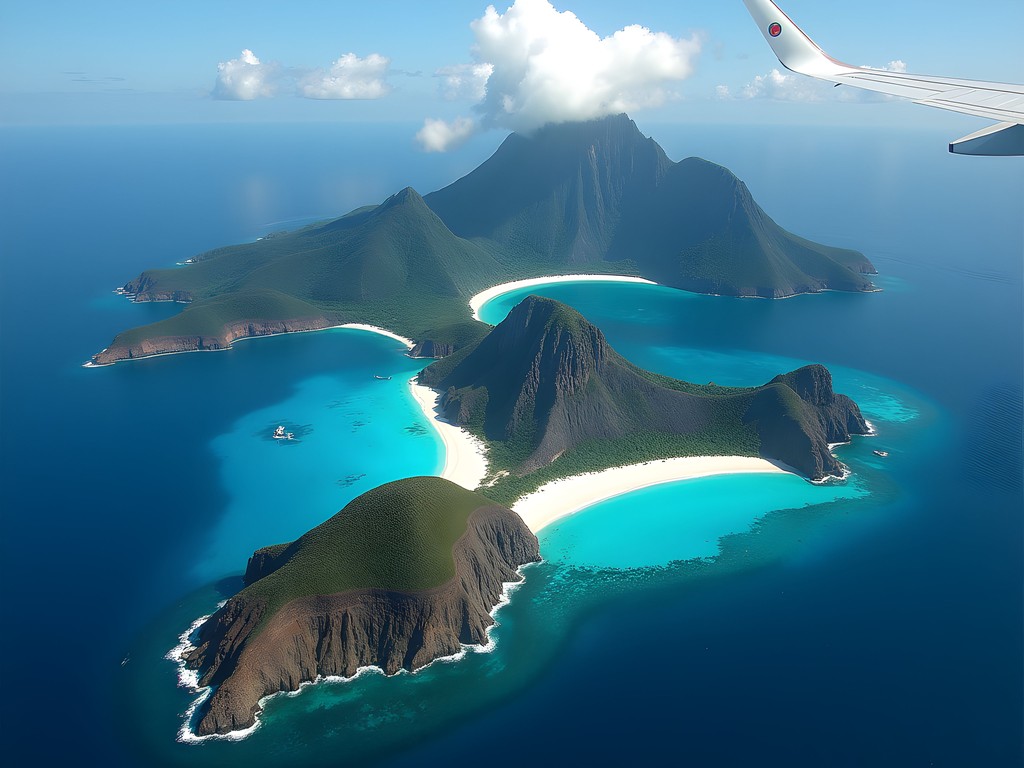
💡 Pro Tips
- Book flights 3+ months in advance to secure seats during peak season
- Request an early morning flight from the mainland for maximum first-day exploration time
- Consider splitting accommodation between different areas of the island for varied experiences
Dive Operations & Site Selection
Fernando de Noronha hosts approximately ten dive operations, each offering slightly different experiences. After considerable research, I selected Atlantis Divers for their smaller group sizes and experienced divemasters who prioritize marine conservation. Their pre-dive briefings were notably comprehensive, covering not just safety protocols but detailed explanations of the marine ecosystems we'd encounter.
The archipelago features over 20 dive sites with varying difficulty levels. For intermediate divers, I recommend beginning with Cabeço da Sapata and Cabeço Submarino—both offering exceptional visibility and moderate currents. The former features dramatic underwater canyons where we encountered schools of barracuda moving in mesmerizing formations against the blue backdrop.
More advanced divers should prioritize Pedras Secas and Caverna da Sapata, where stronger currents reward you with encounters with larger pelagic species. During our dive at Pedras Secas, we witnessed manta rays performing what appeared to be an underwater ballet—a spectacle our divemaster had only seen three times in her fifteen-year career.
Regardless of which operation you choose, investing in a quality dive computer is essential. The ability to track multiple dives while monitoring depth and no-decompression limits significantly enhanced my experience and safety. The device's GPS functionality also proved useful for mapping favorite snorkeling spots during surface intervals.
Most dive packages include two morning dives with afternoon options available. I recommend the morning sessions when visibility is typically at its peak and marine life most active.

💡 Pro Tips
- Book dive packages before arrival as operations often reach capacity
- Request divemasters who specialize in underwater photography if documenting your experience
- Consider a refresher course if you haven't dived within the past year
Marine Life Encounters
What distinguishes Fernando de Noronha from other diving destinations is not merely the diversity of marine life but the remarkable density and proximity of encounters. The archipelago's protected status—established in 1988 as Brazil's first Marine National Park—has created an underwater sanctuary where species thrive in numbers rarely seen elsewhere.
Spinner dolphins represent the marquee attraction, with the archipelago hosting the largest resident population in the world. These acrobatic cetaceans frequently approach divers with evident curiosity. During our third dive at Ilha da Selinha, a pod of nearly thirty dolphins circled our group for over ten minutes—an interaction our divemaster described as increasingly rare at more commercialized diving destinations.
Green and hawksbill sea turtles appear with such regularity that you'll likely lose count after the first dive. Unlike more timid populations I've encountered in the Caribbean, these turtles often approach divers, providing exceptional photography opportunities. The underwater camera I brought captured remarkable footage, particularly when using the super-wide lens setting to contextualize the turtles within their environment.
Shark enthusiasts won't be disappointed either. Nurse sharks frequent the sandy bottoms near Ilha do Meio, while lemon sharks occasionally patrol the deeper channels. These encounters occur within a balanced ecosystem where predator-prey relationships remain intact—a refreshing contrast to destinations where artificial feeding has disrupted natural behaviors.
Perhaps most impressive was the coral health throughout the archipelago. Having witnessed concerning bleaching events across the Pacific and parts of the Caribbean in recent years, the vibrant, thriving coral formations of Fernando de Noronha offered a hopeful glimpse of what protected marine environments can achieve.

💡 Pro Tips
- Maintain neutral buoyancy around coral formations to prevent accidental damage
- Bring a reef identification guide to enhance your appreciation of the diverse species
- Consider an afternoon boat tour specifically for dolphin watching between dive days
Above-Water Experiences
While underwater activities rightfully dominate Fernando de Noronha's reputation, the archipelago's terrestrial offerings provide the perfect complement to your diving schedule. The island's dramatic volcanic landscapes, pristine beaches, and hiking trails deserve dedicated exploration time—I recommend alternating dive days with land-based activities to allow for proper off-gassing.
Baía do Sancho consistently ranks among the world's best beaches, and for good reason. Accessing this secluded cove requires descending a narrow staircase between rock crevices—an adventure that filters out casual tourists and rewards visitors with perhaps the most picturesque beach setting I've encountered. Arriving early (before 9 am) allows you to experience the beach nearly empty, a luxury unimaginable at comparably beautiful locations elsewhere.
The hike to Ponta da Sapata offers spectacular sunset viewing opportunities. The trail culminates at Fernando de Noronha's westernmost point, where the Two Brothers rock formation (the archipelago's iconic landmark) appears dramatically silhouetted against the setting sun. My compact binoculars proved invaluable here, allowing detailed observation of seabirds nesting along the cliffs and distant whale spouts during migration season.
For a uniquely local experience, arrange an evening visit to Projeto TAMAR, the sea turtle conservation project that has significantly contributed to the archipelago's protected status. Their researchers offer insightful presentations on conservation efforts, occasionally coinciding with turtle hatchling releases depending on the season.
Dining on the island emphasizes fresh seafood with Brazilian influences. Mergulhão Restaurant offers exceptional moqueca (traditional Brazilian seafood stew) with sunset views, while Bar do Meio provides the perfect setting for post-dive caipirinhas on the beach.

💡 Pro Tips
- Visit beaches early morning or late afternoon to avoid peak sun exposure
- Carry the environmental preservation tax receipt with you at all times—rangers conduct frequent checks
- Pack reef-safe sunscreen as conventional formulations are prohibited to protect marine ecosystems
Luxury Accommodations & Practical Considerations
Fernando de Noronha's accommodation landscape deliberately avoids the mega-resort model found at many diving destinations. Instead, luxury manifests through exclusive pousadas offering personalized service, exceptional locations, and thoughtful amenities that complement the natural environment.
Pousada Maravilha represents the pinnacle of island luxury with just eight bungalows featuring private decks and outdoor hot tubs overlooking Sueste Bay. Their commitment to sustainability—including solar heating and water reclamation systems—aligns perfectly with the archipelago's conservation ethos without sacrificing comfort.
For those seeking a more immersive experience, Pousada Teju-Açu offers charming accommodations nestled within the island's lush interior, where breakfast includes fruits harvested from their organic gardens. The property's resident biologist leads fascinating night walks focusing on the island's endemic species.
Regardless of your accommodation choice, advance booking is essential—often 6-12 months for peak season visits. The limited inventory combined with the visitor cap creates perpetual demand that rarely fluctuates with global tourism trends.
The island's environmental preservation tax deserves special mention. Currently structured as a progressive daily fee that increases with the length of your stay, it effectively discourages mass tourism while funding conservation efforts. For our seven-day visit, this added approximately $300 per person—a meaningful contribution to maintaining the pristine environment we had come to experience.
Internet connectivity remains deliberately limited throughout the archipelago. While most accommodations offer basic WiFi, bandwidth constraints make video calls and large file transfers challenging. I found this digital semi-detachment refreshingly conducive to fully experiencing the destination—a rare opportunity to disconnect from the constant demands of event coordination that typically follow me on business trips.
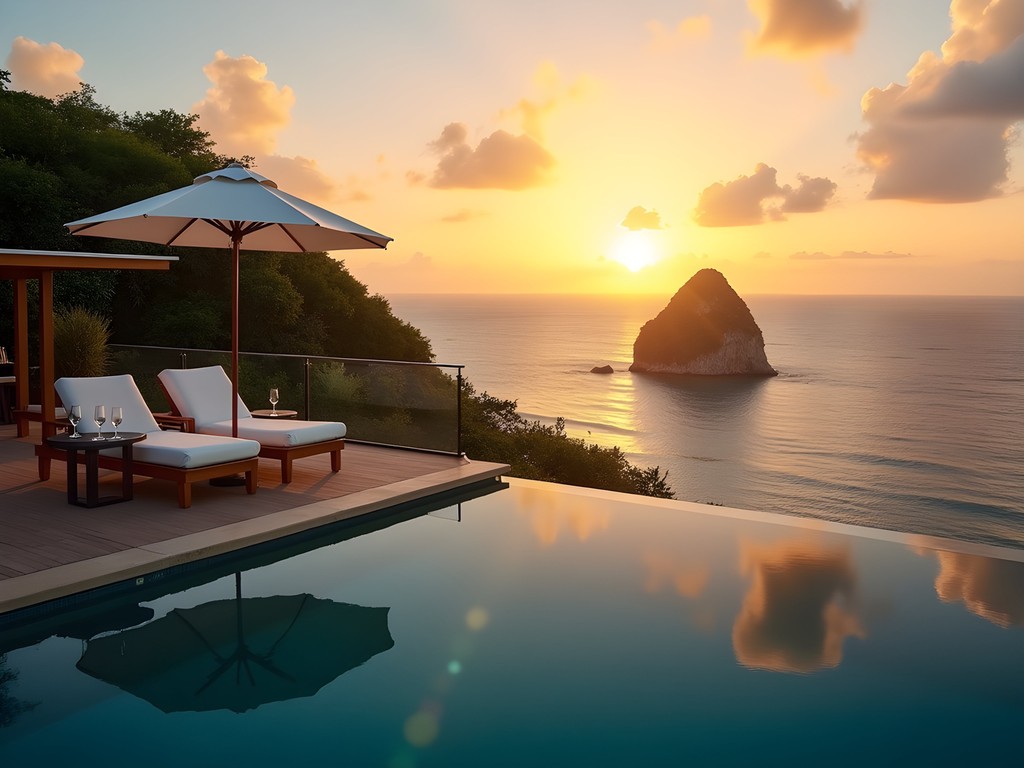
💡 Pro Tips
- Book accommodations 6-12 months in advance for high season visits
- Request rooms with ocean views—the premium is justified by spectacular sunrise perspectives
- Pre-pay the environmental preservation tax online to streamline your arrival process
Final Thoughts
Fernando de Noronha represents a rare convergence of exclusivity and authenticity that increasingly eludes even the most discerning travelers. The deliberate visitor limitations that drive its premium pricing simultaneously preserve the very experiences that make it extraordinary. As someone who has coordinated luxury corporate retreats across continents, I recognize the archipelago's potential for transformative experiences—particularly for couples seeking meaningful connection through shared adventure. The underwater encounters here create the kind of lasting memories that transcend typical vacation experiences, while the island's commitment to sustainability offers a compelling model for responsible luxury tourism. Whether you're advancing your diving credentials or simply seeking Brazil's most pristine marine environment, Fernando de Noronha delivers an uncompromising blend of natural wonder and thoughtful exclusivity that justifies both the journey and the investment.
✨ Key Takeaways
- Book accommodations and diving packages 6-12 months in advance due to strict visitor limitations
- Budget appropriately for the environmental preservation tax that increases with longer stays
- Alternate diving days with land exploration to fully experience the archipelago's diverse offerings
- Consider visiting during shoulder seasons (April-May or September-October) for optimal diving conditions with slightly reduced rates
📋 Practical Information
Best Time to Visit
August-December for optimal visibility; December-March for warmest waters
Budget Estimate
$5,000-7,000 per person for a 7-day experience including flights, accommodation, diving, and preservation fees
Recommended Duration
6-8 days minimum to justify the journey and experience multiple dive sites
Difficulty Level
Intermediate

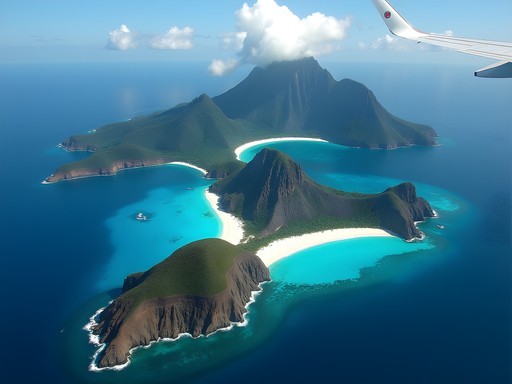



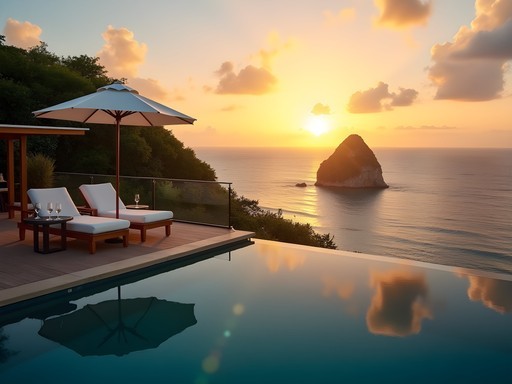






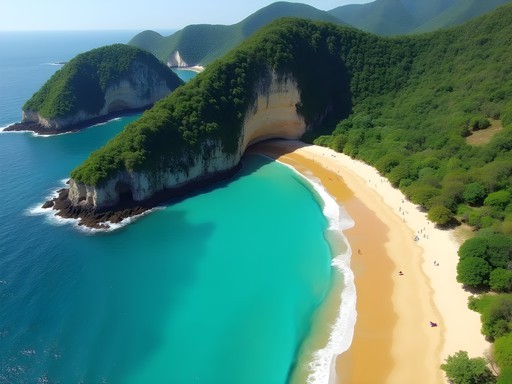

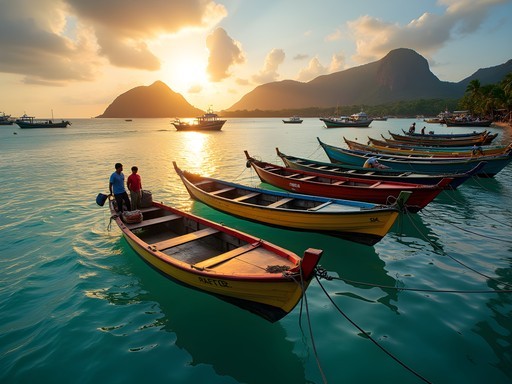

Comments
exploreclimber
What's the best time of year to visit? I hate crowds but also want good weather for diving.
Austin Alexander
April-June is your sweet spot - water visibility is still excellent, crowds are thinner, and prices drop a bit. September-November is also good, but you might catch some rain.
Jean Wells
Excellent breakdown of the dive sites, Austin. I visited Fernando de Noronha in 2020 right before the pandemic hit, and your assessment is spot-on. One thing I'd add for readers - the environmental preservation fee has increased since then, making it even more important to plan your days efficiently. I found that the best visibility was consistently at Pedras Secas, though the currents can be challenging for less experienced divers. For those planning to visit, I'd strongly recommend getting your Advanced Open Water certification before going, as many of the premier sites are in the 18-30 meter range. Also, my dive computer was invaluable given the varying depths and currents. Worth bringing your own gear if you're serious about maximizing the experience.
exploreclimber
Thanks for the certification tip, Jean! Was thinking I could get by with just the basic Open Water.
Jean Wells
You can definitely enjoy it with Open Water, but Advanced opens up about 40% more sites. Worth the extra effort before you go!
luckylegend
Been to 23 dive sites worldwide and Noronha still tops my list. The dolphin bay is unreal!
Sophia Gomez
Austin, this guide is exactly what I needed! I'm planning a corporate retreat for my tech company's leadership team, and Fernando de Noronha seems perfect for what we're looking for - exclusive yet meaningful. I visited Bora Bora last year for a similar event, but the authenticity factor was missing. One question - did you find the internet connectivity reliable enough for occasional work calls? Some of our executives will need to check in with the office. Also, which of the pousadas would you recommend for a group of 12 that values privacy but also wants common areas for team discussions?
Austin Alexander
Hi Sophia! For corporate retreats, I'd recommend Pousada Maravilha - they have excellent facilities and can arrange private spaces for your team discussions. Internet is surprisingly good for such a remote location, though I'd suggest scheduling any critical calls during morning hours when usage is lower. If you're serious about the retreat, I'd be happy to connect you with my local contacts there!
skywanderer
I've been wanting to visit Fernando de Noronha for years! Your underwater shots are absolutely stunning. Do you need to be an experienced diver or are there options for beginners too?
Austin Alexander
There are definitely options for all levels! Several dive shops offer discover scuba experiences for complete beginners, and the snorkeling is world-class too if you're not certified. The waters are so clear that even snorkelers get amazing marine life encounters.
smartway
Just showed this to my wife. Guess where we're going for our anniversary next year! 😍
wildvibes
OMGGG those turtle photos are INCREDIBLE!!! Fernando de Noronha just shot to the top of my bucket list! Did you need an underwater camera or was this with a GoPro?
escapenomad
This looks amazing! How difficult is it to get the visitor permit you mentioned? Is it something I need to arrange months in advance?
Austin Alexander
Hi there! Yes, I'd definitely recommend booking the permit at least 3-4 months ahead, especially during high season (Dec-March). The daily visitor quota is strictly enforced, and permits often sell out quickly. You can apply through the official Fernando de Noronha website.
escapenomad
Thanks for the quick response! Will start planning early then.
winterguide
This looks amazing! How many days would you recommend staying? Is a week enough to see the best dive sites?
roamvibes
Not Austin, but we stayed 6 days and it felt just right. Did 8 dives total plus some beach days. The island is small but you don't want to rush it!
Sage Dixon
I'd agree with @roamvibes - 5-7 days is ideal. Remember the daily conservation fee adds up, so budget accordingly!
Sage Dixon
Austin, your post brings back incredible memories! I visited Fernando de Noronha in 2023 and it remains my gold standard for diving destinations. One tip for readers: book your accommodation and dive packages WAY in advance - the strict visitor limits mean everything fills up quickly. I stayed at Pousada Maravilha which offered stunning views of Baía do Sueste. For underwater photography enthusiasts, I recommend bringing a red filter for your GoPro - the colors at depth are spectacular but you need the right equipment to capture them. The dolphin bay morning snorkel was another highlight - seeing spinner dolphins in such large pods was magical. Great comprehensive guide!
Austin Alexander
Thanks for the kind words, Sage! You're absolutely right about booking in advance - I should have emphasized that more. The visitor caps make spontaneous trips nearly impossible. Great tip on the red filter too!
Venture X
Premium card with 2X miles, $300 travel credit, Priority Pass